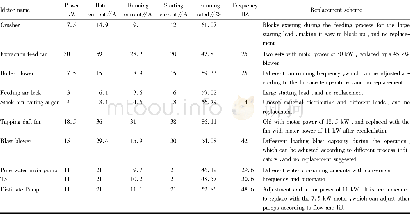《Table 6.Transfer TFP and its decompositions (Scheme 4) .》
 提示:宽带有限、当前游客访问压缩模式
提示:宽带有限、当前游客访问压缩模式
本系列图表出处文件名:随高清版一同展现
《Measuring Scientific Productivity in China Using Malmquist Productivity Index》
The measurement of the MPI index of Scheme 1 reflects the trend of overall productivity of the sample universities during the investigated period.Furthered by decompositions results,a comprehensive understanding of the development of the higher education industry can be obtained from the improvement of the industry’s internal frontier technology and the progress of universities in the pursuit of the best-performed universities.The results are shown in Table 3.The overall TFP consistently exceeded unity,which shows that these sample universities continuously improved their development in all aspects and achieved an average 10.3%increase in the overall efficiency.On average,the technical efficiency was growing at an average annual rate of 0.8%,and the technological progress increased by 9.5%annually.Therefore,the technological progress(Frontier-shift effect)was the main reason for the growth of overall TFP in Chinese universities.Concretely,the Frontier-shift effect declined from 1.272 to 0.812 from 2009–2010 to 2011–2012and then performed decently with the around 1.1 scores during the rest investigated periods.The overall performance of the Catch-up effect was unstable because the Catch-up scores fluctuate around unity,and it exceeded unity only in the periods2011–2012 and 2014–2015.These trends are exhibited in the three polylines in Figure 4.There is an evidently different period 2011–2012,compared with other periods,with an extremely high level of overall TFP but abnormal Catch-up and Frontier-shift values,which may be caused by the promulgation of Outline of Chinese National Medium-and Long-Term Education Reform and Development Plan in 2010.In response to the problems in Chinese higher education,it summarized the experience gained in practice and formulated several strong policies,especially the university de-administrative policy.It aims to weaken the administrative characteristic in colleges and universities and explore the full potential of academic resources.Meanwhile,a batch of management systems in line with the characteristics of colleges and universities have also been introduced.
| 图表编号 | XD0043843100 严禁用于非法目的 |
|---|---|
| 绘制时间 | |
| 作者 | Yaoyao Song、Torben Schubert、Huihui Liu、Guoliang Yang |
| 绘制单位 | Institutes of Science and Development, Chinese Academy of Sciences、University of Chinese Academy of Sciences、Fraunhofer Institute for Systems and Innovation Research ISI、Center for Innovation, Research and Competence in the Learning Economy(CIRCLE)at Lund |
| 更多格式 | 高清、无水印(增值服务) |





